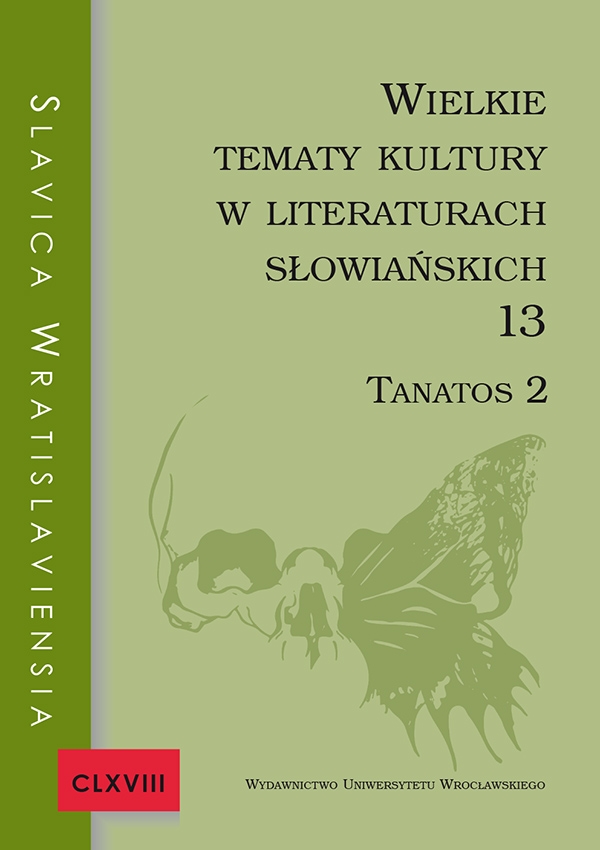

Literatury Słowiańszczyzny południowej

Familiarized death: The topoi of hagiographical dying scenes selected examples from Old Serbian literature
The notion of familiarized death, introduced by the French researcher Philip Ariés in order to characterize the approach to the end of human life that was common in ancient culture, serves as the point of departure for considerations regarding hagiographical scenes of dying. This approach, adopted by people of the medii aevi, maintained a positive attitude towards the fundamental event of death. In this article, the structure and topics of hagiographical scenes of death are elaborated on, using examples from Old Serbian literature, in which the discussed problem is revealed in the adaptation context as an implementation of orders inscribed in the ancient textbooks of good dying — artes bene moriendi. The literary scene of death is, therefore, analysed with reference to a specific scheme. Its components constitute a series of common points of narrative, and contain a self-evident imperative of Christ’s imitation imitatio Christi, assuming such obligatory practices as prayer oratio, call clamatio, and cry ploratio that are to lead up to the moment of commending one’s soul to God commendatio, and giving up the ghost traditio. This template serves the purpose of familiarizing with elementary and characteristic ideas, conceptional constructions, and topoi, which are portrayed as the components of the whole structure along with its individual constitutive elements. It also forms the basis for the exposition of motifs acting in the hagiographical scene of death as obligatory and facultative means of conveying meanings. This eventually allows the article’s authoress to prepare a fundamental catalogue of these motifs. Due to the accepted modus operandi, the most important and frequent constructions in these literary narratives serve to describe and expose the event of death, namely, the topoi of old age, weakness, fear of infernal torture, bewailing human sinfulness, falling asleep — blessed sleep, wandering — spiritual climbing, angelic mission, etc.
Смрт припитомљена. Топика житијне сцене умирања неколико примера из старе српске књижевности
Полазна тачка је овде појам смрти припитомљене / укроћене који је увео Филип Аријес и који карактерише општи став према крају људског живота у средњем веку. Према томе о средњем веку може се рећи да је раздобље „припитомљене смрти”, онда је човек живео у стању духовне помирености са одласком са овог света. Средњовековни човек је био присан са смрћу, јер ју је прихватао као природни поредак, потчињавао се закону врсте и веровао је у спасење на оном свету. У раду се разматра житијна сцена смрти која је у средњовековној књижевности једна адаптација трајне схеме коју су пропагирале artes bene moriendi. Она је поновљење новозаветне слике Христове мученичке смрти, тако да се једноставно заснива на идеји imitatio Christi. Ову схему граде општа места: oratio молитва, clamatio мољење, ploratio плач, commendatio поверење i traditio предање духа. Све те канонске моменте прате одређене идеје, теме и мотиви. Дакле, у житијној сцени смрти појављују се различити топоси од којих неки су веома чести обавезни или факултативни, као су на пример топос старости, болести, слабости; топос страха од вечне муке; топос оплакивања, топос уснућа – блаженог сна; топос путовања – душевне лествице; топос анђела Божијег, топос светла итд. Сви су они својеврсни предоџбени носиоци и оруђа, начини мирења човека са смрћу у средњем веку. Тако у раду је направљен један каталог најважнијих и најчешће присутних топоса у житијној нарацији о одласку са овог света.